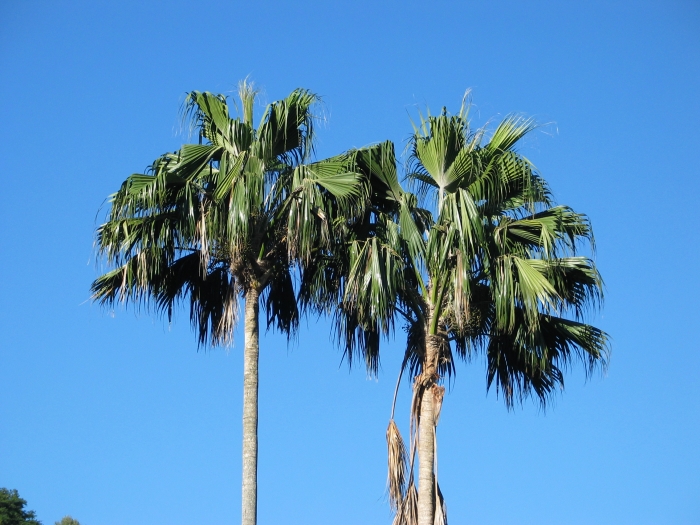Nihoa Pritchardia
(Pritchardia remota)
Nihoa Pritchardia (Pritchardia remota)
/
/

David Eickhoff from Pearl City, Hawaii, USA
CC BY 2.0
Image By:
David Eickhoff from Pearl City, Hawaii, USA
Recorded By:
Copyright:
CC BY 2.0
Copyright Notice:
Photo by: David Eickhoff from Pearl City, Hawaii, USA | License Type: CC BY 2.0 | License URL: https://creativecommons.org/licenses/by/2.0 | Uploader: File Upload Bot (Magnus Manske) | Publisher: Wikimedia Commons | Title: Pritchardia_remota_(4762186078).jpg | Notes: =={{int:filedesc}}== {{Information |description={{en|1=''Prostanthera aspalathoides'' (cultivated, labelled) , Maranoa Gardens, Balwyn, Victoria, Australia}} |date=5 October 2007 |source={{own}} |author=[[:en






















Estimated Native Range
Summary
Pritchardia remota, commonly known as Nihoa Pritchardia, is an evergreen palm endemic to the rocky slopes and cliffs of Nihoa Island in the Northwestern Hawaiian Islands. It typically grows to a height of 5-16 feet (1.5-4.9 meters) and a width of 5-6 feet (1.5-1.8 meters). This palm is characterized by its fan-shaped leaves and slender, smooth trunk. The inflorescences bear small, inconspicuous yellow flowers, which are followed by black fruits when pollinated. Flowering occurs in the spring and summer, and while the flowers are not particularly showy, they do attract pollinators.
Nihoa Pritchardia is valued for its rarity and unique provenance, making it a prized specimen for tropical and subtropical gardens. It is often used as a focal point in landscapes or as part of a collection of rare plants. In cultivation, it requires full sun exposure and well-draining soil, mirroring its native rocky habitat. It is moderately drought-tolerant once established but benefits from regular watering during prolonged dry periods. Due to its limited natural range, it is not commonly available in the nursery trade, but when obtained, it should be protected from strong winds and salt spray.CC BY-SA 4.0
Nihoa Pritchardia is valued for its rarity and unique provenance, making it a prized specimen for tropical and subtropical gardens. It is often used as a focal point in landscapes or as part of a collection of rare plants. In cultivation, it requires full sun exposure and well-draining soil, mirroring its native rocky habitat. It is moderately drought-tolerant once established but benefits from regular watering during prolonged dry periods. Due to its limited natural range, it is not commonly available in the nursery trade, but when obtained, it should be protected from strong winds and salt spray.CC BY-SA 4.0
Plant Description
- Plant Type: Tree
- Height: 4.5-16 feet
- Width: 4.5-6 feet
- Growth Rate: Slow
- Flower Color: Orange, Yellow
- Flowering Season: Spring, Summer
- Leaf Retention: Evergreen
Growth Requirements
- Sun: Full Sun
- Water: Medium
- Drainage: Fast
Common Uses
Low Maintenance, Potted Plant
Natural Habitat
Endemic to the rocky slopes and cliffs of Nihoa Island in the Northwestern Hawaiian Islands
Other Names
Common Names: Lo’ulu, Loulu, Nihoa Fan Palm
Scientific Names: , Pritchardia remota, Pritchardia aylmer-robinsonii, Pritchardia remota subsp. remota, Eupritchardia remota, Pritchardia remota subsp. aylmer-robinsonii, Styloma remota, Washingtonia remota,
GBIF Accepted Name: Pritchardia remota (Kuntze) Becc.